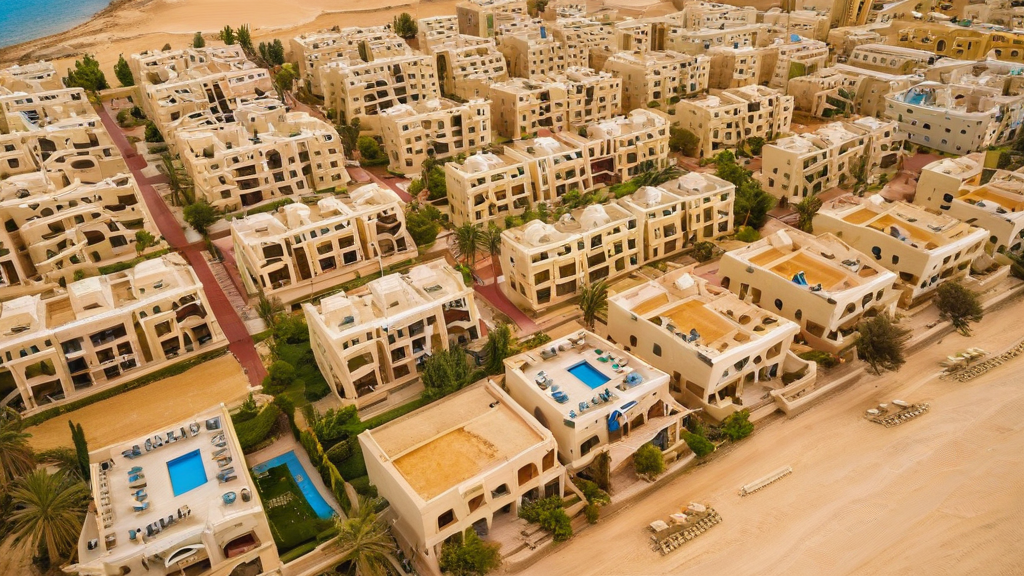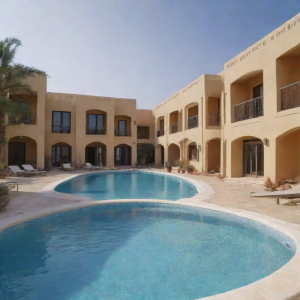Summary about owning and buying property in Hurghada, Egypt.
- Investing in coastal property along the Red Sea has been gaining popularity among investors seeking unique opportunities in emerging markets.
- This growth offers investors a chance to enter a market before prices peak, making early investment attractive.
- Before making a purchase, consider the following important points to ensure your investment aligns with your goals and risk tolerance.
- Investing in Red Sea coastal property offers an exciting opportunity to be part of a transforming region with strong fundamentals for growth.
- By doing thorough research, consulting trusted experts, and keeping a long-term perspective, you position yourself to reap the rewards while minimizing challenges that come with real estate investment in this promising part of the world.
The truth about investing in red sea coastal property: risks and rewards
Investing in coastal property along the Red Sea has been gaining popularity among investors seeking unique opportunities in emerging markets. The allure is strong: pristine beaches, expanding tourism infrastructure, and government-backed development projects aiming to transform the region into a world-class destination. However, like any real estate investment, buying property here carries both significant rewards and notable risks. Understanding the whole picture helps you make smarter choices and protects your investment over time.
Growing appeal of the red sea coastal area
The Red Sea coast spans several countries, including Saudi Arabia, Egypt, and Sudan. Recently, the Saudi Arabian coastline, in particular, has attracted substantial international attention. Ambitious projects such as the Red Sea Project and NEOM,a futuristic city aimed at technological innovation,are set to dramatically boost the region’s profile. With luxury resorts, eco-friendly tourism, and new business hubs emerging, property values here have the potential to rise sharply.
This growth offers investors a chance to enter a market before prices peak, making early investment attractive. For individuals looking to buy vacation homes, rental income properties, or long-term holdings, this could translate to excellent returns.
Key rewards of investing in red sea coastal property
When considering investment, focusing on tangible benefits helps clarify the potential upside. Here are some rewards you might experience:
- High Appreciation Potential: With ongoing infrastructure development, land and property prices can increase rapidly.
- Tourism-Driven Demand: As millions of tourists are expected to visit, rental income opportunities arise from short-term vacation rentals.
- Government Support: Policies intended to boost foreign ownership and ease investment restrictions make the process smoother.
- Natural Beauty and Exclusive Locations: Pristine beaches and coral reefs add unique value that attracts international buyers.
Challenges and risks to consider
Despite the positive outlook, investing in Red Sea coastal property is not without pitfalls. Awareness of these issues helps you assess risk and prepare accordingly.
- Market Volatility: Emerging markets can experience rapid shifts in property values, influenced by political changes or economic fluctuations.
- Regulatory Uncertainty: While governments are making efforts to encourage investment, legal frameworks are often evolving and may change unexpectedly.
- Infrastructure Development Pace: Delays in critical infrastructure like roads, airports, and utilities can affect property demand and usability.
- Environmental Concerns: Coastal areas face risks such as erosion, rising sea levels, and regulatory restrictions protecting natural habitats.
- Liquidity Issues: Selling niche properties in developing areas can be challenging, potentially leading to longer holding times.
Factors to evaluate before investing
Before making a purchase, consider the following important points to ensure your investment aligns with your goals and risk tolerance:
- Research Government Plans: Understand the scope and timeline of development projects and their impact on property values.
- Legal Due Diligence: Verify ownership rights, foreign ownership regulations, and taxation policies.
- Location Analysis: Choose areas with growing infrastructure and tourism appeal rather than speculative or isolated spots.
- Partner With Experts: Engage local real estate agents, legal advisors, and property managers experienced in Red Sea transactions.
- Assess Your Investment Timeline: Coastal property investment here may require patience to realize significant returns.
How to maximize the benefits of your investment
Once you’ve purchased property, taking proactive steps will help maximize rewards and mitigate risks:
- Stay Updated: Monitor regional development news and policy changes that affect real estate.
- Maintain Your Property: Coastal environments can be harsh on buildings; ongoing maintenance preserves value.
- Consider Rental Management: If you plan to rent, hiring professional management can improve occupancy and rental income.
- Diversify Portfolio: Avoid putting all your capital in one location; explore different types of properties or locations.
Investing in Red Sea coastal property offers an exciting opportunity to be part of a transforming region with strong fundamentals for growth. However, it is essential to balance enthusiasm with careful planning and realistic expectations. Awareness of risks combined with strategic actions can unlock substantial benefits over time.
By doing thorough research, consulting trusted experts, and keeping a long-term perspective, you position yourself to reap the rewards while minimizing challenges that come with real estate investment in this promising part of the world.
Navigating legal and environmental considerations when buying red sea waterfront real estate
Understanding legal frameworks for waterfront property
Purchasing a property along the Red Sea coastline comes with unique legal challenges that differ greatly from inland real estate. The first step when considering such an investment is to gain a clear understanding of the local property laws. Many countries bordering the Red Sea have specific regulations controlling foreign ownership, land use, and development rights.
You need to verify property titles carefully. In some regions, land ownership documentation can be complex due to historical claims or overlapping land rights. Engage with reputable legal professionals who specialize in maritime and coastal property law to ensure that the title is free of disputes or restrictions.
Additionally, coastal properties often fall within special zoning laws or conservation areas, which means there might be limitations on how you can develop or modify your property. These regulations can affect building height, land coverage, and usage types, potentially impacting the investment’s long-term value and your intended plans for the property.
Environmental regulations shaping coastal investments
The Red Sea coastline is known for its rich biodiversity and unique marine ecosystems. Governments across the region have enacted environmental protection laws aimed at preserving these delicate habitats. As a buyer, you must understand the implications of these laws before committing to purchase.
One significant consideration is the Environmental Impact Assessment (EIA). For many waterfront properties, especially those slated for development, conducting an EIA is mandatory. This process evaluates the potential consequences of construction or renovation on the surrounding ecosystem and may require mitigation measures to reduce harmful effects.
Failing to comply with environmental regulations may not only result in fines but could also lead to halted construction and loss of investment. It’s essential to ask property sellers or developers about any EIAs already conducted and what environmental obligations you inherit as a property owner.
Key points to evaluate before buying
- Ownership Restrictions: Clarify whether foreign nationals are allowed to own the property outright or if long-term leases are the standard.
- Coastal Zoning Laws: Check local rules on land use, building codes, and conservation zones that may limit development options.
- Environmental Compliance: Review any existing environmental assessments and know your responsibilities in maintaining eco-friendly practices.
- Access Rights: Confirm legal access to the beach or waterfront, which can sometimes be restricted even if you own adjacent land.
- Community and Local Authority Plans: Investigate any future infrastructure projects that could affect property value or accessibility.
Protecting your investment through due diligence
Engaging experts is crucial when navigating the complex legal and environmental landscape of Red Sea waterfront properties. Besides legal advisors, consider hiring environmental consultants who understand local ecosystems and regulatory requirements.
Ask for detailed documentation: land registry excerpts, building permits, environmental permits, and any litigation history associated with the property. Thorough due diligence helps uncover potential risks early, which can save you from costly surprises later.
Moreover, understand that compliance is ongoing. Owning a property by the Red Sea means committing to responsible stewardship of natural resources. This commitment not only preserves the environment but can also enhance the long-term value and appeal of your investment.
Navigating cultural and political factors
Legal and environmental matters are intertwined with cultural and political contexts in Red Sea coastal countries. Regulatory stability may vary, and policy changes might affect property rights and environmental rules.
Stay informed about the current political climate and land reform trends. Establish relationships with local stakeholders, including community leaders and government representatives, to keep updated on any changes that might impact your ownership or property usage.
This proactive approach can also provide insights into sustainable development initiatives, tourism plans, or conservation projects designed to protect the Red Sea’s unique coastline, all of which shape the value environment for coastal properties.
Final considerations when investing in red sea waterfront property
Investing in real estate along the Red Sea is more than a financial decision; it’s an opportunity to be part of a dynamic interaction between natural beauty, economic potential, and regulatory frameworks. While the allure of oceanfront living or business prospects is strong, remember that legal clarity and environmental responsibility are non-negotiable pillars for successful investment.
By approaching the purchase with a well-informed mindset focused on compliance and sustainability, you position yourself not only to enjoy the extraordinary environment but also to protect your asset against future uncertainties.
Ultimately, the truth about investing in Red Sea coastal property is that it requires patience, knowledge, and collaboration with experts. But with these in place, you can unlock rewarding opportunities within one of the world’s most remarkable maritime regions.
Investing in Red Sea coastal property offers an exciting opportunity to own a piece of a rapidly developing and stunning waterfront region. The potential rewards,such as high appreciation, access to pristine beaches, and growing tourism,make these properties highly attractive. However, the risks should not be overlooked. Market fluctuations, regulatory changes, and environmental concerns can impact your investment’s value and sustainability. Understanding these factors is essential before making any commitments.
When buying Red Sea waterfront real estate, it’s important to carefully navigate the legal landscape. Research property rights, ownership restrictions, and transaction processes thoroughly to avoid unexpected issues. Partnering with trusted local experts and legal advisors can help ensure clear titles and compliance with all regulations.
Environmental considerations also play a key role. The unique marine ecosystem of the Red Sea requires responsible development and conservation efforts to protect its natural beauty. Be mindful of projects’ environmental impact and look for properties that prioritize sustainable practices.
Ultimately, successful investment in Red Sea coastal property comes down to balancing the lucrative prospects with careful due diligence. By weighing both the rewards and challenges, and staying informed about legal and environmental factors, you can make a sound, long-term decision that offers both enjoyment and financial benefits. Taking a thoughtful approach will help you unlock the true potential of this unique real estate market while safeguarding your investment against common pitfalls.










